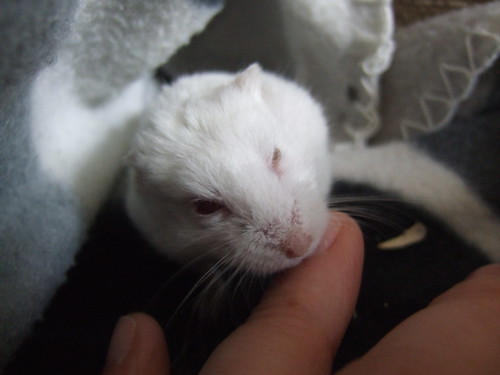Hamsters eating their poo is a common cause for concern amongst hamster owners everywhere.
- The idea of eating waste that has been digested is disgusting!
But I would like to put your minds at rest. Eating their poo isn't bad for hamsters!
Hamsters are very curious creatures, and their digestive systems do not work the same as humans.
You could say their digestive systems were less efficient, as some of their poo is still filled with nutrients which means that they have not absorbed all the nutrients while being digested. But there is a reason behind this, which is explained below.
As their poo is filled with nutrients, they eat it so they can get the most out of their food. It's simply like putting food through your digestive system twice to get the best out of it. Not gross at all if you think of it like that!
 |
| Picture via here. |
There are two types of excrement from hamsters:
- One that's only partially digested and therefore contains lots of nutrients
- One that's that's just waste with no nutrients at all
Now hamsters are highly intelligent in working out which is which, and they use a skill called coprophagy: the act of eating the nutrient-filled excrement to get the leftover nutrients from it and digest it fully.
Why do hamsters partially digest some, and fully digest others?
This is because in the harsh deserts and environments in places like Syria where hamsters originally come from, food is often scarce. By only partially absorbing the nutrients and the hamsters being able to eat their excretment again, this allows that food to be completely digested so that the hamsters get the most out of it, and they do not go hungry if they go for days without food.
It also helps to keep hamsters' guts balanced, so not too many nutrients are absorbed at once, and also making sure that there will also be a source of nutrients for hamsters to eat.
It also helps to keep hamsters' guts balanced, so not too many nutrients are absorbed at once, and also making sure that there will also be a source of nutrients for hamsters to eat.





























